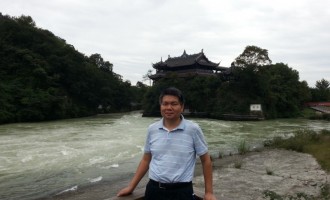The future of wastewater treatment
Important advances in activated sludge sewage treatment can and will improve its energy use and resource recovery, Mark van Loosdrecht (TU Delft) and Damir Brdjanovic (UNESCO-IHE) predict in the June 27 issue of Science. The TU Delft is a key player in these technological developments. UNESCO-IHE provides leading educational programmes in sanitary engineering for mainly developing countries.
Century
Exactly 100 years since the activated sludge process was presented, it is still at the heart of current sewage treatment technology. Activated sludge is a mixture of inert solids from sewage combined with a microbial population growing on the biodegradable substrates present in the sewage.
But the current demands from a rapidly growing human population and the need for a more sustainable society are pushing forward new developments for sewage handling, say prof. Mark van Loosdrecht (TU Delft) and Damir Brdjanovic (UNESCO-IHE) in a perspective in the June 27 issue of Science.
‘The activated sludge process, combined with a better drinking water supply, was the main factor behind the increase in average life span in the previous century and for minimizing the environmental impact of human activities. Wastewater treatment is in itself a relatively low-cost process consuming limited energy; its main limitations are the large upfront investment costs and land area requirements. Attempts to intensify the separation process, e.g., by membrane separation of the sludge, have been technologically successful but not widely used because of the additional energy demand and capital costs.’
Granules
The morphogenesis of the microbial communities in activated sludge is a complex process based on the interaction of microbiological, chemical, and physical processes. Only in recent years has it become possible to engineer these microbial structures to allow bacteria to form a stable granular sludge instead of flocculent sludge. The TU Delft was one of the major contributors to the development of this technology.
Van Loosdrecht: ‘This form of sludge makes gravity-based separation a compact process that can be integrated inside the treatment reactor, and greatly reduces area requirements and costs, by roughly 75 and 25%, respectively.’
Sewage treatment by activated sludge is a technology that allows for closing cycles and reuse of resources such as water, energy and chemicals. Effective sewage treatment makes the recovery of water by the use of membrane technology feasible. Furthermore, water stress can be minimized by the use of alternative water sources, e.g., by using harvested rainwater or seawater for toilet flushing.’
Anammox
‘With the recent advance of Anammox technology (another major development in which the TU Delft was one of the key players), a net energy-producing treatment plant, including effective nutrient removal, is becoming feasible’, the article continues. ‘Although the recuperation and production of energy at sewage works is currently getting most attention, the resource recovery from wastewater and sludge should not be overlooked. Phosphate recovery from sewage is increasingly being used, and other options for the production of valuable materials from sludge are also emerging, e.g., the recovery of cellulose fibers and the production of bioplastics and biopolymers.’
Developing world
In contrast to high-income industrialized countries, the sewerage coverage and sewage treatment in developing countries are overall very low. ‘In these regions, centralized conventional activated sludge (CAS) systems are competing with decentralized technology. Replicating CAS designs too often has not taken into account the differences in local conditions, such as sewage characteristics and temperature. But the main constraint identified as contributing to or causing the numerous failures of CAS systems in the developing world, is poor governance by the responsible institutions, say Van Loosdrecht en Brdjanovic. ‘The solutions for these issues may be the construction of smaller and simpler, decentralized systems that are community-managed, thus minimizing costs or enhancing resource recovery.









